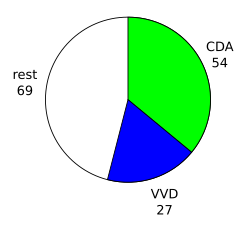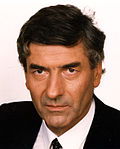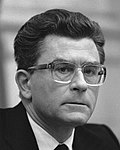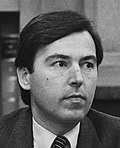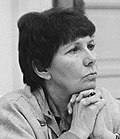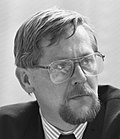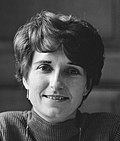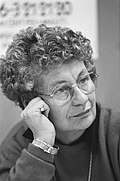Ministers Title/Ministry /Portfolio(s) Term of office Party Ruud Lubbers (1939–2018) Prime Minister General Affairs 4 November 1982 – [Retained] [Continued] Christian Rudolf de Korte (1936–2020) Deputy Economic Affairs 14 July 1986 – People's Party Minister Kees van Dijk (1931–2008) Minister Interior 14 July 1986 – [Note] Christian Frits (1931–2025) 26 January 1987 – [Ad Interim ] People's Party Jan de Koning (1926–1994) 3 February 1987 – [Acting] Christian Kees van Dijk (1931–2008) 6 May 1987 – Christian Hans van (1936–2025) Minister Foreign Affairs 4 November 1982 – [Retained] [Continued] Christian Onno Ruding (born 1939) Minister Finance 4 November 1982 – [Retained] Christian Frits (1931–2025) Minister Justice 4 November 1982 – [Retained] People's Party Wim van Eekelen (1931–2025) Minister Defence 14 July 1986 – [Res] People's Party Piet Bukman (1934–2022) 6 September 1988 – [Ad Interim ] Christian Frits Bolkestein (1933–2025) 24 September 1988 – People's Party Elco Brinkman (born 1948) Minister Welfare, Health 4 November 1982 – [Retained] Christian Jan de Koning (1926–1994) Minister Social Affairs and 4 November 1982 – [Retained] [Note] Christian Louw de Graaf (1930–2020) 3 February 1987 – [Acting] Christian Jan de Koning (1926–1994) 6 May 1987 – Christian Wim Deetman (born 1945) Minister Education and 29 May 1982 – [Retained] [App] Christian Gerrit Braks (1933–2017) 14 September 1989 – [Acting] Christian Neelie Kroes (born 1941) Minister Transport and 4 November 1982 – [Retained] People's Party Gerrit Braks (1933–2017) Minister Agriculture and 4 November 1982 – [Retained] [Continued] Christian Ed Nijpels (born 1950) Minister Housing, Spatial 14 July 1986 – People's Party Ministers without portfolio Title/Ministry /Portfolio(s) Term of office Party Jan de Koning (1926–1994) Minister Interior • Netherlands 29 May 1982 – [Retained] Christian Piet Bukman (1934–2022) Minister Foreign Affairs • Development 14 July 1986 – Christian State Secretaries Title/Ministry /Portfolio(s) Term of office Party Dieuwke de (1930–2008) State Secretary Interior • Municipalities Emergency Emergency Regional 14 July 1986 – [Continued] Christian René van (born 1943) State Secretary [Title] Foreign Affairs • European Union Benelux 14 July 1986 – [Res] Christian Baron Berend-Jan van (1944–2023) 27 September 1988 – Christian Henk Koning (1933–2016) State Secretary Finance • Fiscal Policy Tax and Customs Governmental 4 November 1982 – [Retained] People's Party Virginie (1929–2014) State Secretary Justice • Immigration Civil Law Penitentiaries Gambling 8 November 1982 – [Retained] Christian Enneüs Heerma (1944–1999) State Secretary Economic Affairs • Trade and Export [Title] 17 July 1986 – [App] Christian Yvonne van Rooy (born 1951) 30 October 1986 – Christian Albert-Jan (1941–2011) • Small and Regional Tourism 14 July 1986 – [Res] People's Party Jan van (1939–2013) State Secretary Defence • Human Equipment 14 September 1981 – [Retained] Christian Dick Dees (born 1944) State Secretary Welfare, Health • Primary Environmental 14 July 1986 – People's Party Louw de Graaf (1930–2020) State Secretary Social Affairs and • Social Security Occupational Integration Minorities 5 November 1982 – [Retained] Christian 6 May 1987 – [Res] Nell Ginjaar-Maas (1931–2012) State Secretary Education and • Primary Secondary Adult 5 November 1982 – [Retained] People's Party Gerrit Brokx (1933–2002) State Secretary Housing, Spatial • Urban Planning Public Housing Spatial Planning 5 November 1982 – [Retained] [Res] Christian Enneüs Heerma (1944–1999) 27 October 1986 – Christian 
